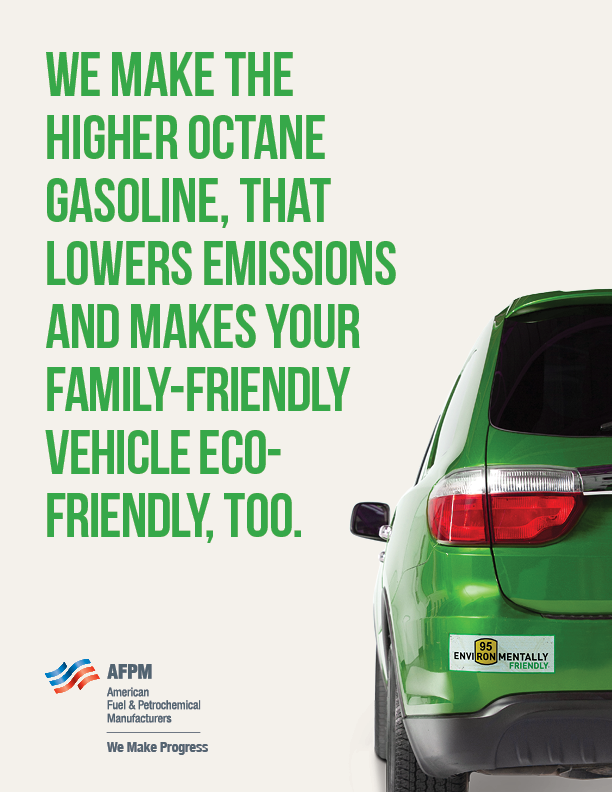Building on decades of broader efforts alongside automakers to advance fuel-efficient technologies and vehicles, refiners are leading the effort to transition the U.S. to high-octane gasoline to boost efficiency, and in doing so reduce carbon emissions by an amount equivalent to taking hundreds of thousands of vehicles off the road each year.
The goal is to enact a nationwide high-octane, 95-RON fuel standard that would meet the most stringent air quality standards in every state, including California, while delivering efficiency gains of three to four percent — far more than the fractional improvements that typically come with vehicle design changes.
The standard would “reduce [carbon dioxide] emissions more cost-effectively for consumers than other options available,” American Fuel & Petrochemical Manufacturers President and CEO Chet Thompson told a U.S. House Energy and Commerce subcommittee in December 2018.
The high-octane, 95-RON fuel would be added to pumps alongside existing fuel options, and when used in optimized engines would allow vehicles to travel farther on each tank of gas less expensively than other options.
Congress has explored implementing the new high-octane fuel standard in 2022 as an improvement over current requirements such as the Renewable Fuel Standard, which mandates ethanol use in gasoline. The proposed rule changes coincide with automakers’ efforts to diversify powertrains, making smaller engines that rely on turbocharging to increase output. Using the new fuel, carmakers can tune engines for higher compression, which boosts power while cutting emissions.
“If we really want to address CO₂, it’s super important to address fuel as part of the system,” said Dan Nicholson, General Motors’ vice president of electrification, controls, software & electronic hardware. “The fuels really need to go together with the vehicles and with the engine. It’s time to take a look at the fuel for the next generation of low CO₂-emitting gasoline engines, and high octane has to be a part of that.”
Improvements in internal combustion engine vehicles — and the fuels and oil they run on — have already paid big dividends. From 2004 to 2017, vehicle CO₂ emissions decreased 23 percent and fuel economy increased 29 percent, according to the U.S. Environmental Protection Agency (EPA), meaning today’s bigger cars, trucks and SUVs are travelling about 5.6 miles more per gallon than cars from the last decade. During this same time horsepower increased 11 percent, demonstrating that technology is allowing companies to meet consumer demand while also improving the environment.
While it will cost the industry to make modifications to produce the new, higher-octane fuel at a national scale, initial production can begin quickly at some refineries using existing hardware, enabling a consistent rollout nationwide, AFPM’s Thompson said.

Learn more about how U.S. fuel and petrochemical manufacturers are making life easier, safer and more productive at www.WeMakeProgress.org.


